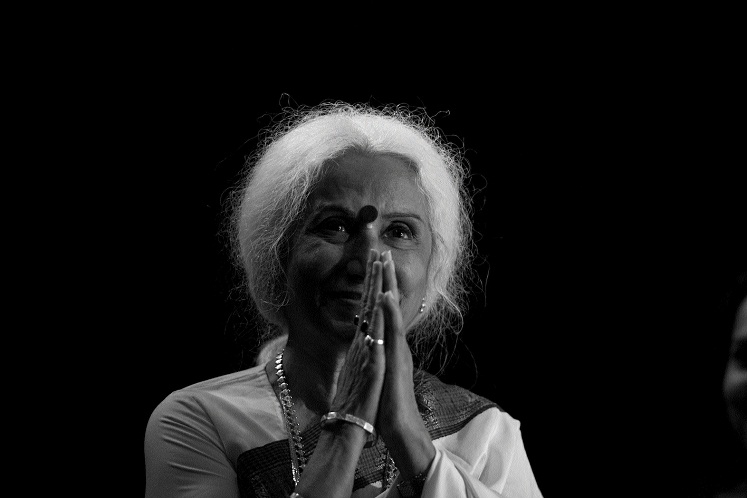Of the purpose of music
25 May 2021 10:43:44

Dr. Prabha Atre
By Vijay Phanshikar :
“Naadachya alyaad laya
Naadachya palyaad sur
Sangeetkarana karava kai?
Sur ani laya
Ek adwait sakartat
Tyaa adwaitaas ...”
(On this side of ‘word’ -- Naad --
is rhythm
On that side of ‘word’ is note
What should the musician do?
Rhythm and note
Accomplish unity -- adwait
To that unity ...)
- Dedication of her master-class
Marathi book ‘Suswaraali’
on music by the legendary classical vocalist
Dr. Prabha Atre
(Third Revised Edition - with CD, 2011, hard cover,
Bookmark Publications)
Prose
IN these deeply meaningful words, Dr. Prabha Atre defines the purpose of music and outlines the task of the musician -- accomplishment of unity -- adwait -- between rhythm and note! It is certainly a tall order -- provided the musician dedicates self to that task in a spiritual mission-mode. On the ordinary level, the musician need not be so overly worried about all that. He -- or she -- can just follow the grammar of the classical style and complete the rendition of the score at hand. Fortunately, music -- of the classical mould -- has often prevailed well beyond those narrow confines of just grammar. It has often sucked the music-creator into that higher zone of expression in which rhythm and musical note accomplish a divine unification -- or unity or adwait -- across the permeable membrane of naad -- word.
All connoisseurs may not be aware of the details of this process, but all dedicated creators of classical music -- whether vocal or instrumental -- bring about that effect with a divine touch. All classical masters have dwelt in this ethereal zone -- deeply committed to bringing about a fine unification of the rhythm and note -- laya and sur -- and adding fine emotion to the rendition.
Every music creator of merit is engaged all the time in thinking about each note -- sur or swar -- singularly or in collective raag formation. Gaansaraswati Kishori Amonkar spent all her energies in identifying separate personae of the swar. The iconic Pandit Kumar Gandharva often said, he kept looking at swar from all angles and presented those to the audience. Pandit Ravi Shankar, Ustad Bismillah Khan, Pandit Bhimsen Joshi, Ustad Amjad Ali Khan, Pandit Jitendra Abhisheki, Pandit Jasraj, Pandit Rajan Mishra and Pandit Sajan Mishra, Pandit Ajoy Chakraborty, his legendary daughter Kaushiki Chakraborty, the masterful Savani Shende-Sathye, the iconic Shankar Mahadevan, Vidushi Girija Devi ... all of them, and many more, without exception... dedicated themselves to accomplishing that divine unity which they felt was the purpose of music.
Considered from this angle, music is a sure step to the higher zone of spirituality, taking one closer to experiencing the Naad-Brahma! Musical grammar does play a role all right in all this. But what matters most is something beyond that -- the ability to accomplish the unity of rhythm and note and render a fine effect that draws the listener into its wake. On one level, all this sounds very complex -- or even perplexing. On another level, it is so absolutely and easily comprehensible. Let alone the deeply intellectual and spiritual dimensions of the issue, music, obviously, is the shortest route to bliss!
